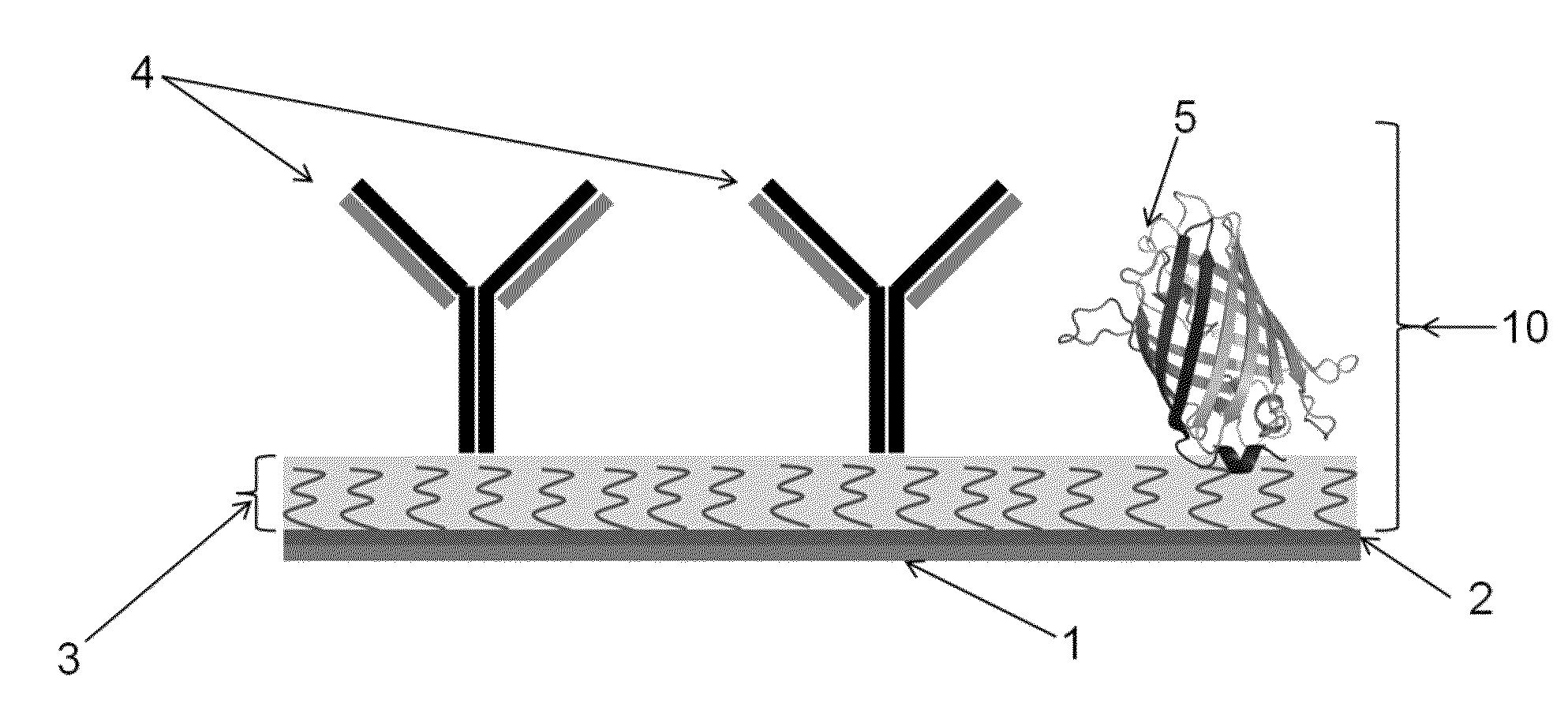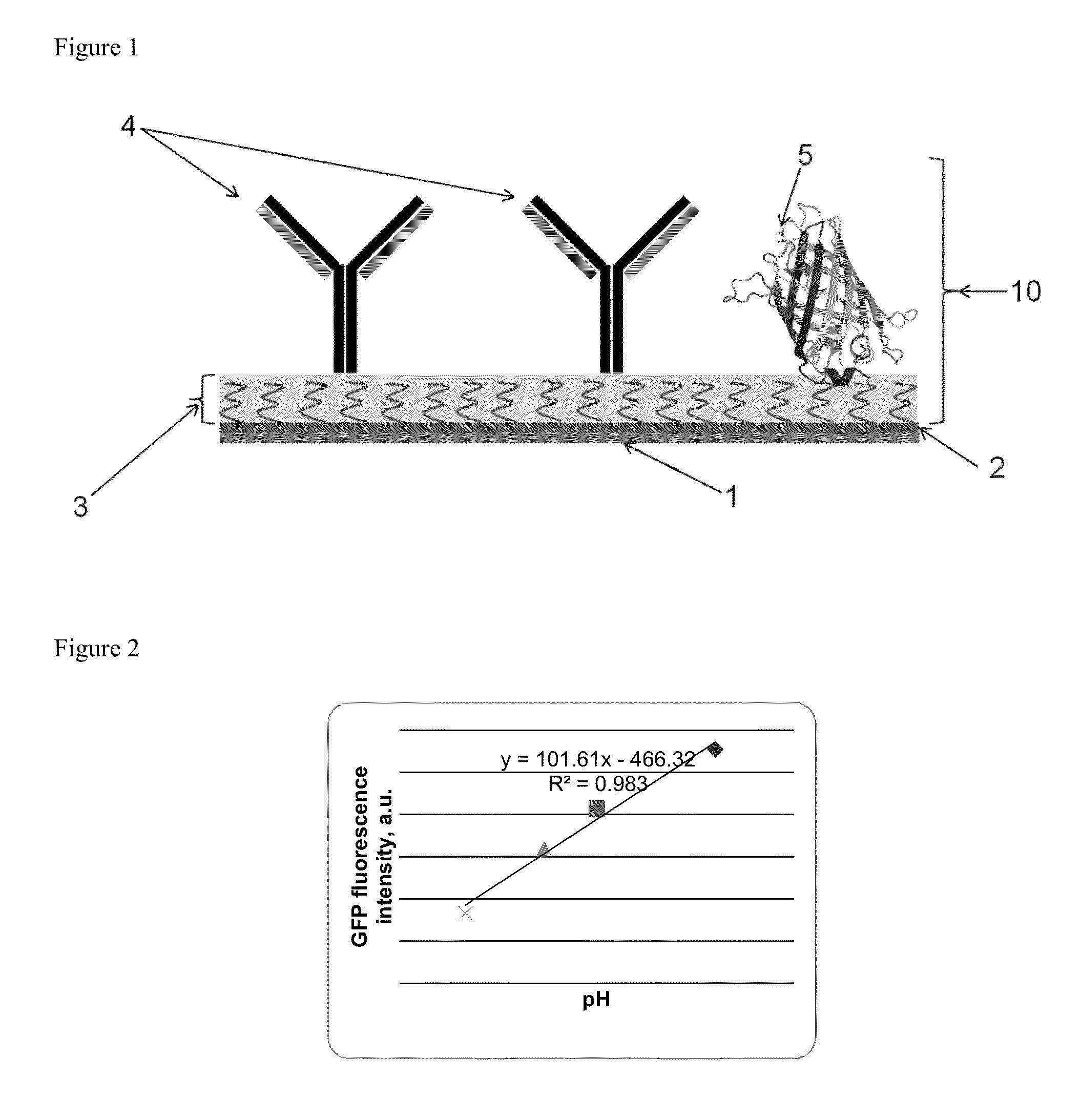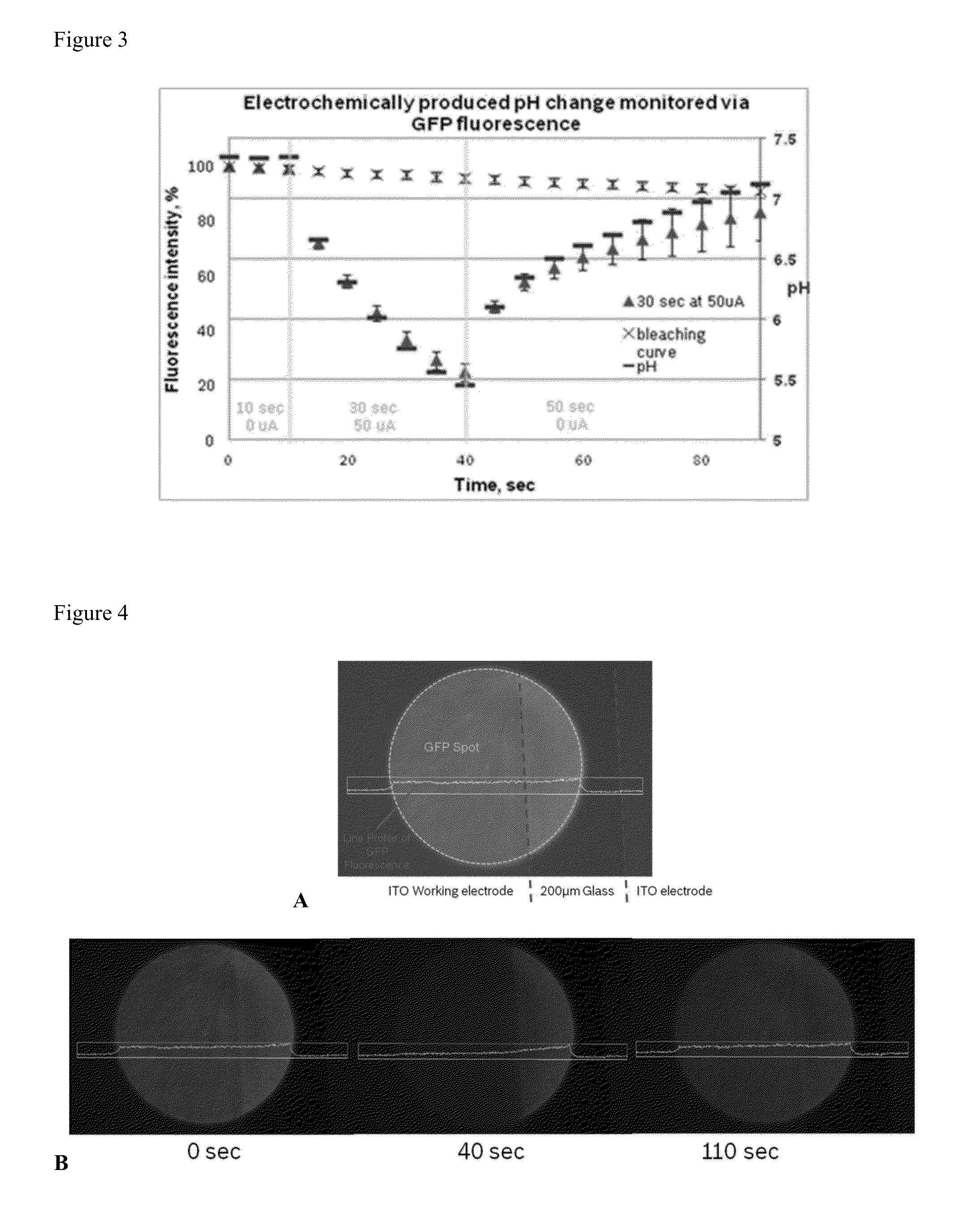Smart glass slide for microarrays
- Summary
- Abstract
- Description
- Claims
- Application Information
AI Technical Summary
Benefits of technology
Problems solved by technology
Method used
Image
Examples
examples
Electrochemical Modulation of pH as Monitored by Fluorescence Intensity with Green Fluorescence Protein (GFP)
[0056]Electrode material used: The electrode material was indium tin oxide. The fluorescent protein used is GFP immobilized on a glass substrate which includes an array of electrodes. The GFP is applied as spots, each spot covers an area that overlaps with one electrode and an area that is not overlapping with an electrode.
[0057]The pH change at the surface of ITO working electrode is generated via current-driven oxidation of a redox active molecule, 2-methyl-1,4-dihydroquinone, in diluted phosphate buffer (pH=7.4) containing 0.1M Na2SO4. After 10 seconds of induction, current (50 microamps) was applied for 30 second, which resulted in a drop of solution pH to 5.5, as was observed by a change in GFP fluorescence intensity. FIG. 2 is used as calibration curve to assess the pH values. After current was turned off, the pH recovered to neutral value within 50 seconds (as shown in...
PUM
 Login to View More
Login to View More Abstract
Description
Claims
Application Information
 Login to View More
Login to View More - R&D
- Intellectual Property
- Life Sciences
- Materials
- Tech Scout
- Unparalleled Data Quality
- Higher Quality Content
- 60% Fewer Hallucinations
Browse by: Latest US Patents, China's latest patents, Technical Efficacy Thesaurus, Application Domain, Technology Topic, Popular Technical Reports.
© 2025 PatSnap. All rights reserved.Legal|Privacy policy|Modern Slavery Act Transparency Statement|Sitemap|About US| Contact US: help@patsnap.com



